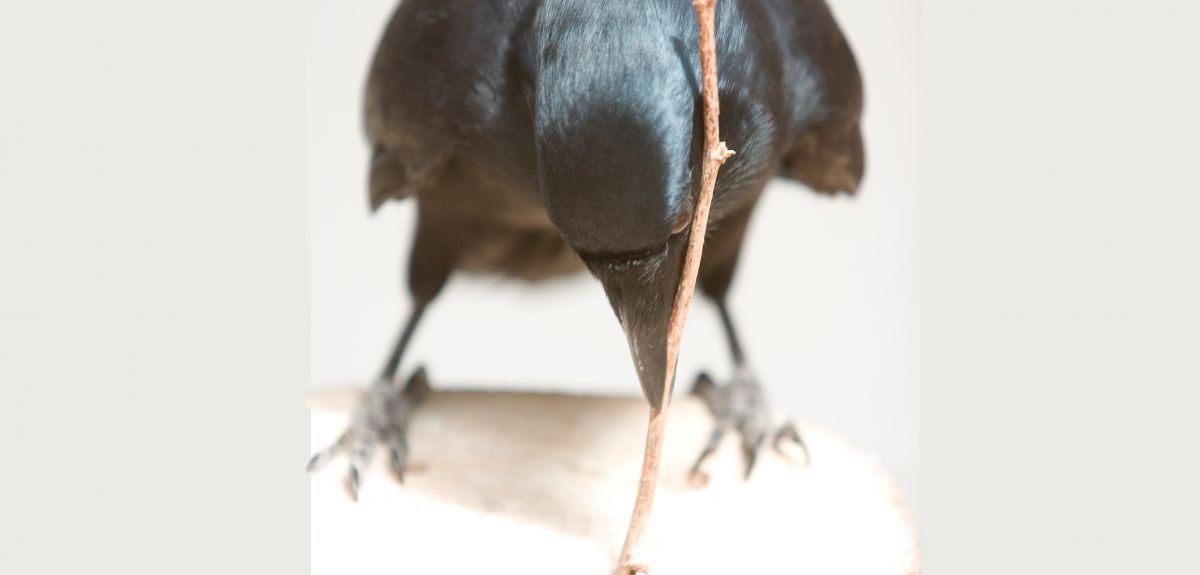
Photo: BERG Oxford
Eyes wide sideways: why crows are left- or right-beaked
New Caledonian crows, well known for wielding tools such as sticks, prefer to hold a tool on the left or the right sides of their beaks, in much the same way that people are left- or right-handed.
Now researchers reporting in the Cell Press journal Current Biology suggest that those bill preferences enable each bird to keep the tip of its tool in view of the eye on the opposite side of its head. Crows aren't so much left- or right-beaked as they are left- or right-eyed.
'If you were holding a brush in your mouth and one of your eyes [was] better than the other at brush length, you would hold the brush so that its tip fell in view of the better eye,' said Professor Alex Kacelnik of Oxford University's Department of Zoology, an author of the report. 'This is what the crows do.'
The new study also suggests that the birds'’ extreme binocular vision – characterised by an unusually wide field of view in comparison to other species – actually helps the crows see better with one eye at a time.
'Binocular vision is often connected to allowing the brain to compare the images seen by each eye, inferring properties of the scene from the differences between these images,' said Antone Martinho of Oxford University's Department of Zoology, first author of the report. 'We thought that their binocular fields would facilitate binocular vision, perhaps allowing the birds to judge the distance from tool tip to target. It turned out that, most frequently, they only see the tool tip and target with one eye at a time.'
In other words, the birds are using their notable binocular vision for better monocular vision, allowing each eye to see further toward the other side of the beak. The birds' unusually wide binocular field is among the first known examples of a physical adaptation to enable tool use, the researchers say.
The crows are one of the most innovative tool users in the animal kingdom, and for good reason. They must use sticks to extract larvae from burrows. In some ways, the New Caledonian crows have a tougher problem to solve than humans do when it comes to using tools, because they don’t have the luxury of moving their eyes and beaks independently like humans can with their eyes and hands.
Nevertheless, the findings are a reminder of our shared animal natures, the researchers say. 'Birds and humans face similar problems in tool use and many other activities,' Professor Kacelnik said. 'Studying similar problems across species helps to put all of them in perspective.'
A report of the research, entitled ‘Monocular Tool Control, Eye Dominance, and Laterality in New Caledonian Crows’, is published in Current Biology.
Source: Cell Press
 New Year Honours 2026
New Year Honours 2026
 New study estimates NHS England spends 3% of its primary and secondary care budget on the health impacts of temperature
New study estimates NHS England spends 3% of its primary and secondary care budget on the health impacts of temperature
 International collaboration launches largest-ever therapeutics trial for patients hospitalised with dengue
International collaboration launches largest-ever therapeutics trial for patients hospitalised with dengue
 Oxford-built multi-agent assistant for cancer care to be piloted in collaboration with Microsoft
Oxford-built multi-agent assistant for cancer care to be piloted in collaboration with Microsoft